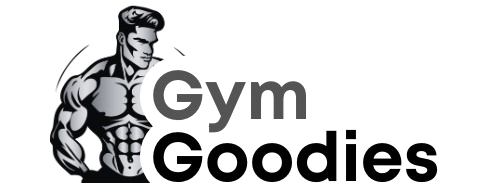Push vs. Pull Exercises: How to Train Your Upper Body Effectively

Ever feel like your upper body workouts aren’t giving you the results you want? Maybe your shoulders burn out too fast, or your back never feels fully engaged. You’re not alone, most people focus too much on one type of movement (usually pushing) and wonder why progress stalls.
Here’s the truth: Balancing push and pull exercises is the key to building a strong, functional, and injury-resistant upper body. Whether you’re a gym newbie or a seasoned lifter, understanding this balance can transform your training. Let’s break it down, myth-free, science-backed, and with real-world fixes that work.
1. Push vs. Pull: What’s the Difference (And Why Does It Matter?)
Push exercises involve moving weight away from your body, while pull exercises bring weight toward you.
Think of it like this: Pushing is your “show” muscles (chest, shoulders, triceps), while pulling is your “go” muscles (back, biceps, rear delts). Most people overdo pushing (bench press, shoulder press) and neglect pulling (rows, pull-ups), leading to imbalances that cause poor posture, shoulder pain, and stalled progress.
The Science Behind the Balance
A 2024 study in the Journal of Strength and Conditioning Research found that athletes who maintained a 1:1 push-to-pull ratio had 17% fewer shoulder injuries and better overall strength gains than those who favored pushing movements.
Real-Life Example:
One client, Adria, complained of constant shoulder discomfort despite benching heavy. After assessing her routine, we realized she was doing four times more push than pull work. By rebalancing her program with more rows and face pulls, her shoulder pain vanished—and her bench press improved.
2. The Hidden Factor Everyone Overlooks: Scapular Control
Your shoulder blades dictate how well you push AND pull.
If your scapulae (shoulder blades) don’t move properly, your form suffers, and your muscles don’t engage fully. A 2023 study in Sports Medicine showed that scapular stability drills improved pressing strength by 12% in just 8 weeks.
Actionable Test: The Wall Slide Drill
- Stand with your back against a wall, arms bent at 90 degrees (like a “goalpost”).
- Slide your arms up and down the wall, keeping your elbows and wrists in contact.
- If your elbows flare or your lower back arches, your scapular control needs work.
Fix: Add scapular pull-ups and band pull-aparts to your warm-ups.
3. Myth Debunked: “Just Lift Heavy to Get Stronger”
Heavy lifting isn’t wrong, it’s just incomplete.
Traditional advice says, “Bench and row heavy to grow your upper body.” But if you’re not also training mobility and endurance, you’re missing half the equation.
The Updated Approach
- Push: Pair heavy presses with lighter, high-rep mobility work (e.g., push-ups with a 3-second pause at the bottom).
- Pull: Focus on controlled eccentrics (e.g., 5-second lowers on pull-ups) to maximize muscle engagement.
Visual Cue:
“Imagine squeezing a pencil between your shoulder blades during rows, that’s the mind-muscle connection you need.”
4. Step-by-Step Fix: A Balanced Upper Body in 6 Weeks
Follow this sequence to build strength, prevent imbalances, and move better.
Phase 1: Foundation (Weeks 1-2)
- Push: Dumbbell floor press (limits shoulder strain)
- Pull: Band-assisted pull-ups (focus on scapular engagement)
- Mobility: Dead hangs (30 sec. x 3 sets)
Phase 2: Strength (Weeks 3-4)
- Push: Incline barbell press (less stress on shoulders than flat bench)
- Pull: Chest-supported row (eliminates cheating)
- Stability: Farmer’s carries (grip + core work)
Phase 3: Power & Endurance (Weeks 5-6)
- Push: Plyometric push-ups (explosiveness)
- Pull: Weighted chin-ups (full-range strength)
- Recovery: Foam rolling lats and pecs (prevents tightness)
Key Takeaways
Push-pull balance prevents injuries and boosts performance.
Scapular control is the secret to better pressing and pulling.
Heavy lifting alone isn’t enough, train mobility and control too.
Follow the 6-week phased plan for a stronger, more resilient upper body.
By the end of this, you won’t just be stronger, you’ll understand your body on a deeper level. Now, go grab a pull-up bar and start pulling your way to better gains!
Conclusion
Integrating both push and pull exercises into your upper body training regimen is essential for balanced muscular development, improved functional strength, and injury prevention.
By understanding the distinct roles of push and pull movements and structuring your workouts accordingly, you can create a comprehensive training program that promotes overall upper body strength and functionality. Remember to listen to your body, allow adequate recovery, and adjust your routine as needed to continue progressing toward your fitness goals.
Most Trusted Links
Disclaimer:
It should be remembered that the information available at gymgoodies.net is constantly evolving and is up-to-date and authentic information on fitness, exercises, and health.
I am a veteran bodybuilder, considering I have been active in the industry for quite some time. I ensure that the content shared reflects the lessons I have learned in my years of training and working or all the exposure I have had.
That said, it must be understood that the information available on this portal is obtained through communication channels and is primarily for education and information. Some factors and changes occur, and the issues discussed in this website address such things.
Every piece of advice regarding fitness or health should be taken with caution.
You might need the assistance of fitness professionals, nutritionists, or doctors regarding your workout routine, diet, or fitness activity. Their advice should be personalized PPC, the guide you integrate into your routine, taking into account your specifications and requirements regarding your health and fitness.
This is key, considering our concern is your health and safety. Make sure you only use the data on the site to empower expert advice and nothing more.



